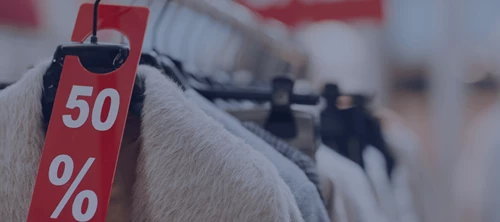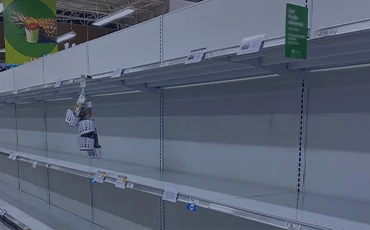
Optimize Pricing and Markdown Decisions During COVID-19
For the majority of retailers around the world, the COVID-19 outbreak is now a reality rather than a looming threat. In response, they have closed their brick-and-mortar stores and redirected consumers to digital channels. Nonetheless, global retail sales are down significantly, particularly in fashion, prompting many companies, from luxury to mass brands, to offer discounts and promotions to accelerate their online sales. But the key question is, what will happen after the pandemic, when the physical stores reopen? Companies that have effective pricing and markdown strategies in place to deal with unsold inventory, canceled orders, diminished sales, and changing consumer behavior, will gain a competitive advantage in a post-COVID marketplace.
There is no existing playbook available to deal with this unprecedented and constantly evolving situation, but here are a few key points to consider when making pricing and markdown decisions.
Analyze the current and next season product portfolio
As retailers close doors in response to COVID-19, excess stock has become a growing concern. Many retailers have halted replenishment and cancelled orders for new products. This impacts not only the current season, but the next one as well. Companies aiming to maximize profitability need to review their product portfolio as a whole for their current and next season(s) and rethink the seasonal calendar. By judicious application of markdowns, and shifting of assortment items across seasons, they can make the most of the current season’s inventory while minimizing risk of inventory shortfalls for upcoming seasons.
Utilize eCom information
Retailers have invested heavily in digital channels in recent years, but for many, online sales still represent a small portion of their revenue. Physical and digital channels are often managed separately, or the signals coming from the traditional channel are prioritized when making pricing, discount, or promotion decisions. However, COVID has pushed retailers into a world where traditional doesn’t exist. They need to take advantage of information that can be obtained from online channels, where demand continues without interruption (even if it is distorted by various effects), to support pricing decisions for physical stores once they reopen.
Read the first signals quickly
Given the uncertainty about consumer behavior when stores reopen, retailers should adopt a read-and-react strategy for making pricing and discount decisions. That strategy relies on two key elements to quickly interpret consumer signals: accurate and timely data, and the ability to extract useful insights (ideally using machine learning and other techniques).
Utilize local signals and information
Each region/county/city has its own demand dynamics and recovery potential given the local policy and pandemic parameters. Thus, all pricing decisions must be localized utilizing granular data and recent local demand signals.
Implement optimized decisions within guardrails
In this extraordinary period, even the best solutions for pricing and markdown decisions will not perform well when stores first reopen, unless they are augmented by business rules that act as “guardrails.” This is an important defense mechanism that allows the retailer to use best practices with greater confidence.
Create your own best, expected, and worst-case scenarios
Predictions from experts about how long it will take for things to return to normal vary widely. While optimistic scenarios predict that normalization would occur within a few weeks post-COVID, pessimistic scenarios foresee a protracted recovery period driven by an economic downturn. Given this uncertainty, retail decision makers will need to develop their own best-case, expected, and worst-case scenarios based on the factors critical to their business. They can then develop pricing and discount strategies around each scenario and prepare for any eventuality.
Analysis of latest conditions during store openings, capturing early signals on demand and new price elasticities, forward-looking demand forecasting, and construction of most likely scenarios can help decision makers now. AI-based price and markdown optimization solutions will be helpful to retailers so they can react more quickly to changes and make informed decisions.



